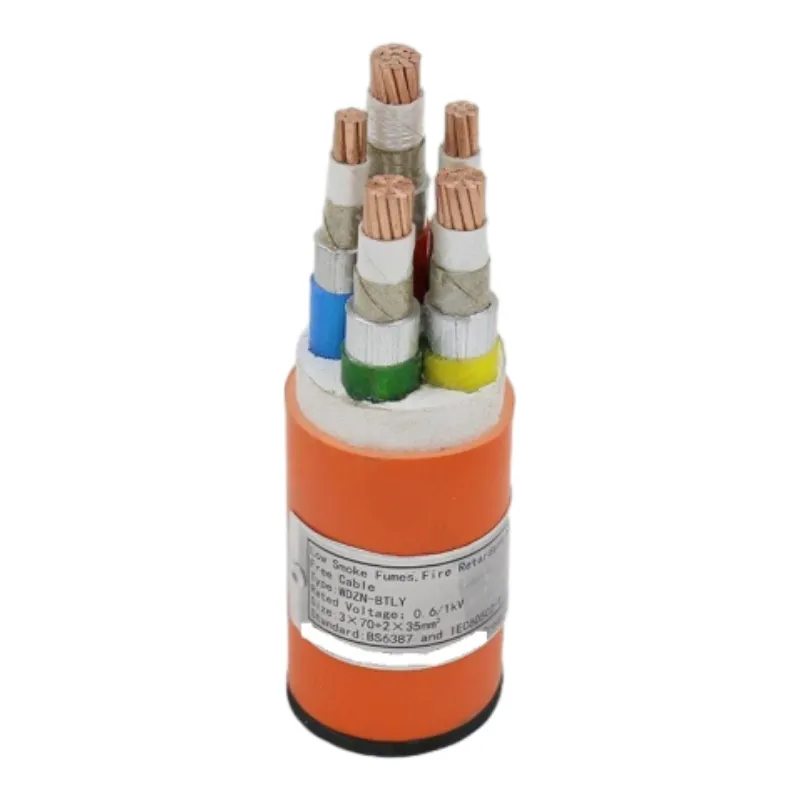Дек . 15, 2024 12:03 Back to list
Understanding the Basics and Applications of Wire Cables in Modern Technology
The Evolution and Importance of Wire Cable in Modern Engineering
Wire cables, often referred to simply as cables, have become one of the cornerstones of modern engineering and technology. From power distribution to telecommunication, the significance of wire cable in facilitating connectivity and efficiency cannot be overstated. This article delves into the history, types, applications, and future of wire cables, highlighting their crucial role in our lives.
A Brief History
The use of wire cables dates back to ancient times, but it was not until the 19th century that they began to see widespread application with advancements in metallurgy and insulation materials. The invention of the telegraph by Samuel Morse in the 1830s marked a pivotal moment in the utilization of wire cables. Copper wire became the standard medium for transmitting electrical signals, paving the way for a revolution in communication.
With the advent of the electrical age, wire cables expanded their role. Thomas Edison and Nikola Tesla’s work with electrical systems showcased the need for reliable and durable cables to transmit electricity over long distances. This led to the development of various types of cables tailored for specific functions, which continue to evolve today.
Types of Wire Cables
Wire cables come in numerous varieties, each designed to meet specific requirements in terms of electrical conductivity, flexibility, and durability. The most common types include
1. Electrical Wire Often made from copper or aluminum, electrical wires are the backbone of power distribution systems. They are insulated to prevent accidental short circuits and designed to handle varying voltages.
2. Fiber Optic Cables Unlike traditional copper cables, fiber optic cables use glass or plastic fibers to transmit data as light signals. They offer high-speed data transfer capabilities, making them essential for internet and telecommunications infrastructure.
3. Coaxial Cables Commonly used for television signals and internet connections, coaxial cables consist of a central conductor surrounded by an insulating layer and an outer conducting shield. They are known for their ability to transmit data over long distances with minimal signal loss.
4. Power Cables These are designed to deliver electrical power to various applications, including residential and industrial machinery. They come in several configurations, such as single-core, multi-core, and armoured cables, each suited for different installation environments.
wire cable

5. Control Cables Used in industrial applications, control cables transmit signals for control systems. They often include multiple conductors and are designed to withstand harsh environmental conditions.
Applications in Various Fields
The applications of wire cables are vast and multifaceted. In residential settings, electrical wiring provides power to appliances, lighting, and heating systems, significantly enhancing comfort and convenience. In the industrial sector, power and control cables facilitate the operation of machinery, allowing for automation and improved productivity.
The telecommunications industry has seen a dramatic transformation due to the development of wire cables, particularly in the realm of data transmission. With the explosion of the internet, fiber optic cables have become indispensable, enabling high-speed connections that facilitate streaming, online communication, and data transfer.
Moreover, wire cables play a crucial role in transportation systems, including railways and aviation. They are used in signaling systems, power supply for trains, and even in aircraft electronics, ensuring safe and efficient operations.
The Future of Wire Cables
As technology advances, the future of wire cables appears promising. Innovations are leading to the development of more efficient materials that enhance conductivity and reduce energy loss. The trend toward renewable energy sources is also driving demand for specialized power cables that can withstand varying environmental conditions.
Furthermore, with the rise of smart cities and the Internet of Things (IoT), the need for reliable and robust wiring solutions is greater than ever. The integration of sensors and smart devices into everyday infrastructure is expected to push the boundaries of how wire cables are used.
Conclusion
In conclusion, wire cables are integral to the functioning of modern society. Their history demonstrates an evolution powered by technological advances that continue to shape our world. As we look ahead, the ongoing innovations in wire cable technology promise to improve efficiency and enhance connectivity, cementing their role as a fundamental component in the ever-evolving landscape of engineering and technology.
Share